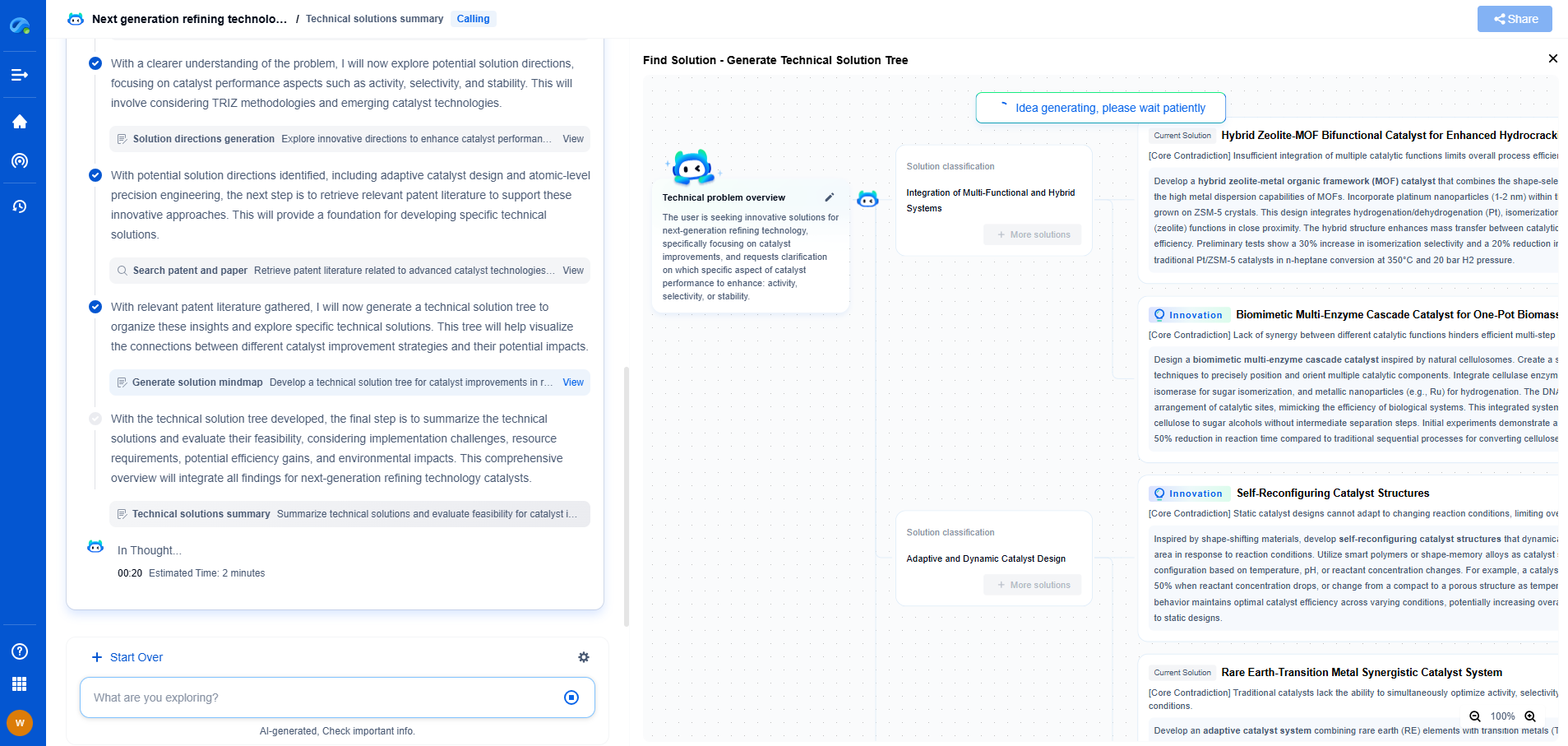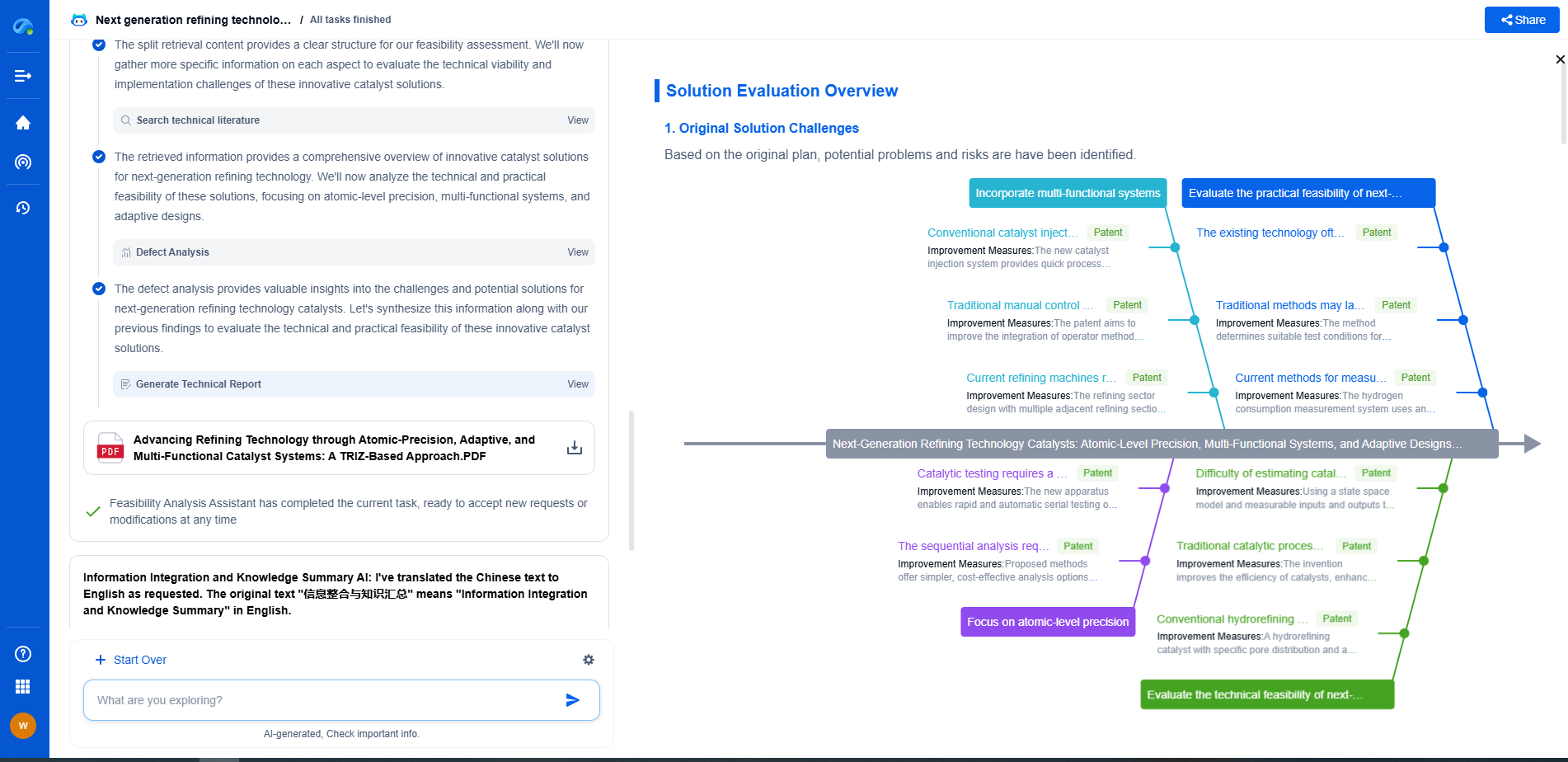HAWTs vs. VAWTs: Which Is Better for Urban Environments?
JUN 26, 2025 |
In recent years, urban environments have increasingly embraced renewable energy technologies as part of a sustainable future. Wind energy, in particular, offers a promising solution for reducing carbon footprints in cities. However, the choice between Horizontal Axis Wind Turbines (HAWTs) and Vertical Axis Wind Turbines (VAWTs) can be challenging. Both have their advantages and disadvantages, making the decision not entirely straightforward. This blog will explore the characteristics of each type, comparing their suitability for urban settings.
Design and Functionality
HAWTs are the more traditional wind turbine design, with blades that rotate around a horizontal axis. They are often recognized by their propeller-like appearance and are typically employed in large-scale wind farms. VAWTs, on the other hand, have blades that rotate around a vertical axis, resembling an eggbeater or a spinning top.
HAWTs are known for their higher efficiency and ability to capture wind from a single direction, whereas VAWTs can harness wind from any direction, which can be an advantage in the unpredictable wind patterns of urban areas. Additionally, VAWTs have a lower starting wind speed, making them more suitable for areas with lower or more variable wind conditions.
Space and Installation Considerations
One of the primary challenges of integrating wind energy into urban landscapes is the limited space available. HAWTs generally require more space due to their size and the need for optimal orientation toward prevailing winds. They also need to be mounted on taller towers to access higher wind speeds above buildings and obstacles, which can be a significant drawback in densely populated areas.
In contrast, VAWTs have a more compact design, making them easier to install on rooftops and in tight spaces. Their ability to function well in turbulent airflows is another advantage in cities, where buildings can create complex wind patterns. Furthermore, the maintenance of VAWTs is often simpler since the generator and gearbox are located closer to the ground.
Noise and Aesthetics
Urban residents are sensitive to noise and visual impact, both of which are significant considerations when implementing wind turbines. HAWTs can generate more noise due to their higher rotational speeds and can be perceived as visually intrusive due to their large, moving blades.
VAWTs generally produce less noise, operating at lower rotational speeds, and are often considered more visually appealing due to their smaller size and unique designs that blend more seamlessly with urban architecture. This makes them an attractive option for cities looking to incorporate wind energy without disturbing the aesthetic or acoustic environment.
Cost and Efficiency
The cost-effectiveness of wind turbines in urban areas is a critical factor in determining their viability. HAWTs, while typically more efficient in converting wind to energy, can be more expensive to install and maintain due to their complexity and the need for larger installations.
VAWTs, with their simpler design and easier maintenance, often present a more cost-effective solution for urban wind energy generation. However, they tend to have lower overall efficiency compared to HAWTs, which can impact their long-term energy output and return on investment.
Conclusion
Deciding between HAWTs and VAWTs for urban environments requires careful consideration of various factors such as space, noise, aesthetics, cost, and wind conditions. VAWTs often emerge as the more practical choice for cities due to their adaptability, lower noise levels, and ease of installation. However, the specific circumstances of each urban area, including available space and prevailing wind patterns, will ultimately dictate the most suitable option. As cities continue to seek sustainable energy solutions, understanding the nuances between these two types of wind turbines will be essential in making informed, environmentally friendly decisions.
Empower Your Wind Power Innovation with AI
In the fast-evolving landscape of wind turbine technology—where aerodynamic optimization, generator efficiency, and structural innovation are critical—staying ahead requires more than just expertise. It requires intelligent tools that accelerate R&D and protect your competitive edge.
Patsnap Eureka is your AI-powered research assistant, designed specifically for innovators like you working at the forefront of Wind Motors. Whether you're analyzing blade design trends, exploring novel gearbox architectures, or navigating complex global patent landscapes, Eureka streamlines the entire process with precision and speed.
👉 Experience how Patsnap Eureka can revolutionize your R&D and IP strategy. Request a demo today and power up your next breakthrough.
- R&D
- Intellectual Property
- Life Sciences
- Materials
- Tech Scout
- Unparalleled Data Quality
- Higher Quality Content
- 60% Fewer Hallucinations
Browse by: Latest US Patents, China's latest patents, Technical Efficacy Thesaurus, Application Domain, Technology Topic, Popular Technical Reports.
© 2025 PatSnap. All rights reserved.Legal|Privacy policy|Modern Slavery Act Transparency Statement|Sitemap|About US| Contact US: help@patsnap.com

